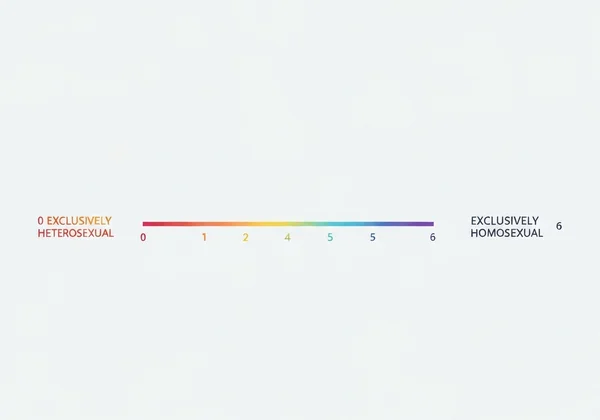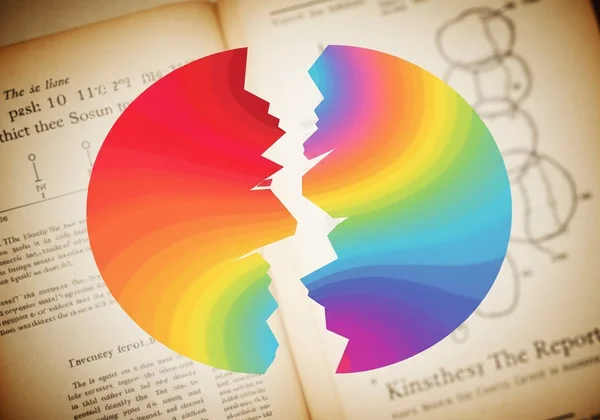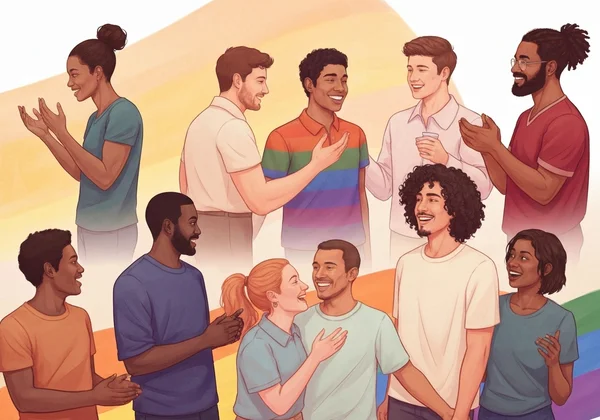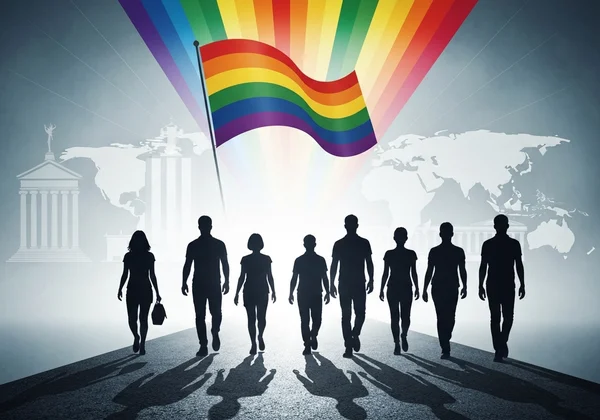Kinsey Scale 6: Exclusively Homosexual Identity Explained
Welcome to a supportive space for exploring the rich tapestry of human sexuality. The journey of self-discovery is unique for everyone, and tools like the Kinsey Scale can offer valuable insights along the way. For many, understanding where they might fall on this spectrum is a pivotal step toward self-acceptance and clarity. What does a score of 6 on the Kinsey Scale signify? This guide is dedicated to providing a comprehensive, compassionate look into the meaning of a Kinsey Scale score of 6, representing an exclusively homosexual orientation.
Understanding your attractions is a deeply personal process. If you're curious about where you might land on the spectrum, you can start your exploration on our platform. We offer a private, user-friendly experience designed to help you reflect on your own identity.
Kinsey Scale 6 Meaning: Defining Exclusively Homosexual
A score of 6 on the Kinsey Scale indicates an individual who is "exclusively homosexual." In the simplest terms, this means that a person's romantic, emotional, and sexual attractions are consistently directed toward individuals of the same sex. This score represents one end of the seven-point spectrum developed by Dr. Alfred Kinsey and his colleagues in the mid-20th century.
It's important to remember that the Kinsey Scale was designed as a tool for reflection, not a rigid diagnostic label. A score of 6 describes a pattern of attraction and behavior over time. It provides a framework for understanding an identity that has always been a natural part of human diversity, even when society was less accepting.
Understanding Kinsey's Spectrum of Sexuality
Before diving deeper into the specifics of a score of 6, it's helpful to understand the revolutionary concept behind the entire scale. When Dr. Alfred Kinsey published his research, the prevailing view was that people were either heterosexual or homosexual, with no middle ground. Kinsey's work challenged this binary by proposing that sexual orientation exists on a continuum.
The scale ranges from 0 (exclusively heterosexual) to 6 (exclusively homosexual). The numbers in between (1-5) represent varying degrees of bisexuality, acknowledging that attraction to more than one gender is common. This fluid model was groundbreaking because it validated the experiences of countless individuals who didn't fit neatly into society's predefined boxes. The scale honors the complexity of human attraction.

Historical Context of the Kinsey Score 6
The publication of the Kinsey Reports in 1948 and 1953 was a watershed moment. At a time when homosexuality was highly stigmatized, criminalized, and classified as a mental illness, Kinsey’s research provided data suggesting it was a relatively common and natural variation of human sexuality. Designating a score for "exclusively homosexual" was a scientific act of recognition.
By including "6" as a legitimate point on the spectrum, Kinsey and his team normalized a gay identity within a scientific framework. This was a radical departure from the moral and medical condemnation of the era. While the scale itself has faced criticism and has been expanded upon by later models, its historical importance in opening up the conversation about sexual diversity cannot be overstated.

Exploring Exclusively Homosexual Identity & Experience
Beyond the numerical definition, a Kinsey score 6 represents a lived reality for many people who identify as gay or lesbian. This identity encompasses more than just sexual behavior; it shapes relationships, community connections, and one's fundamental sense of self. It is a journey of understanding one's own heart and mind.
The path to recognizing and embracing an exclusively homosexual experience is different for everyone. For some, this understanding comes early in life, while for others, it is a realization that unfolds over many years. There is no right or wrong timeline for self-discovery. If you are exploring these feelings, our Kinsey Scale online test is a safe place to begin that reflection.
Lived Realities of a Gay Identity
Identifying as exclusively homosexual means navigating the world from a specific perspective. It involves the joy of finding a deep connection with someone of the same gender and the strength found in the LGBTQ+ community. It is about building families, creating art, and contributing to society while being true to oneself.
However, it can also involve facing unique challenges. Despite significant progress in social acceptance, prejudice and discrimination still exist. The experience of "coming out" to family, friends, and colleagues remains a significant and often courageous step. These lived realities—both the beautiful and the difficult—are integral to the story of what it means to be exclusively homosexual today.

Common Journeys and Misconceptions
A common misconception is that sexual orientation is a choice or a phase. Decades of psychological research have shown this to be untrue. For someone with a Kinsey 6 orientation, their attraction to the same sex is an intrinsic part of who they are, much like an exclusively heterosexual person's attraction to the opposite sex.
The journey of self-acceptance is often a central theme. It can involve unlearning societal prejudices, overcoming internalized shame, and finding a community that offers validation and support. It is a process of aligning one's inner self with their outward life, leading to greater authenticity and well-being. Tools for self-reflection can be a gentle part of this journey, and you can always take the quiz privately on our site.
The Enduring Relevance of Kinsey Score 6 Today
Decades after its creation, is the Kinsey Scale still relevant? While modern understandings of sexuality have expanded to include identities like asexuality and pansexuality, the scale's core concept—that sexuality is a spectrum—remains incredibly valuable. The "6" continues to be a useful descriptor for those whose attractions are exclusively same-sex.
It provides a historical anchor and a straightforward way to communicate a fundamental aspect of one's identity. The scale serves as an excellent starting point for deeper conversations about the nuances of attraction, identity, and expression. Our understanding of these concepts is always evolving, and the Kinsey Scale remains a valuable reminder of this journey.
How Society Views Exclusively Homosexual Orientation
Societal views have shifted dramatically since Kinsey's time. The fight for LGBTQ+ rights has led to legal protections, marriage equality in many countries, and greater representation in media. These changes have created a more affirming environment for individuals with a Kinsey 6 orientation to live openly and proudly.
However, the work is far from over. Cultural and political battles continue, and acceptance varies greatly across different communities and regions. This ongoing struggle highlights the importance of continued education and advocacy. Understanding foundational concepts like the Kinsey Scale helps foster empathy and supports the ongoing movement toward full equality and understanding.

Beyond the Score: Personal Identity & Community
Ultimately, a number can never capture the full richness of a person's life. A Kinsey score is a descriptor, not a definition. Your identity is a unique combination of your attractions, values, passions, and relationships. The score of 6 is a single brushstroke in a much larger, more complex self-portrait.
Ultimately, self-discovery tools like the Kinsey Scale truly shine when they empower your personal journey. It can provide a language to describe your feelings and a connection to a wider community of people with shared experiences. It's a starting point for a journey, not the final destination. To see where your journey might begin, feel free to discover your results on our secure platform.
Embracing Your Understanding: The Kinsey Scale and Beyond
Understanding what a Kinsey Scale score of 6 means is about more than just a definition—it's about honoring a valid and beautiful part of human diversity. It represents an exclusive attraction to the same sex, a concept that has moved from the margins of scientific study to a celebrated identity within the global community. Whether you are an Explorer on your own path, a Knowledge Seeker, or an Ally, this understanding fosters compassion and connection.
Your journey of self-exploration is yours alone, but you don't have to walk it in the dark. Tools like the Kinsey Scale are here to illuminate the path. We invite you to continue your exploration with our confidential and insightful Kinsey Scale test. Discover your place on the spectrum and consider our optional AI-powered report for even deeper personal insights.
Frequently Asked Questions About Kinsey Scale 6
What does a score of 6 on the Kinsey Scale signify?
A score of 6 signifies an "exclusively homosexual" orientation. This means an individual’s psychic-emotional responses, romantic feelings, and overt sexual experiences are directed exclusively toward people of their own sex. It represents one end of the Kinsey sexuality spectrum.
How does the Kinsey Scale differentiate between scores?
The scale uses a seven-point rating system from 0 to 6. A score of 0 indicates being exclusively heterosexual, while a 6 indicates being exclusively homosexual. Scores 1 through 5 represent varying degrees of attraction to both sexes (bisexuality), with 3 signifying an equal attraction to both.
Is the Kinsey Scale's definition of 'exclusively homosexual' still valid today?
Yes, for many people, it remains a valid and useful descriptor. While our language for sexuality has expanded to be more inclusive of identities like pansexuality and asexuality, the term "exclusively homosexual" (often identified as gay or lesbian) accurately describes the experience of many individuals. The scale is best viewed as a foundational tool for personal reflection.
Where can I find support for my homosexual identity?
There are many wonderful resources available. Look for local or online LGBTQ+ community centers, organizations like The Trevor Project or the Human Rights Campaign (HRC), and mental health professionals who specialize in LGBTQ+ affirming therapy. Finding a supportive community is a powerful step in embracing your identity. Our platform provides a safe first step to explore your identity privately.